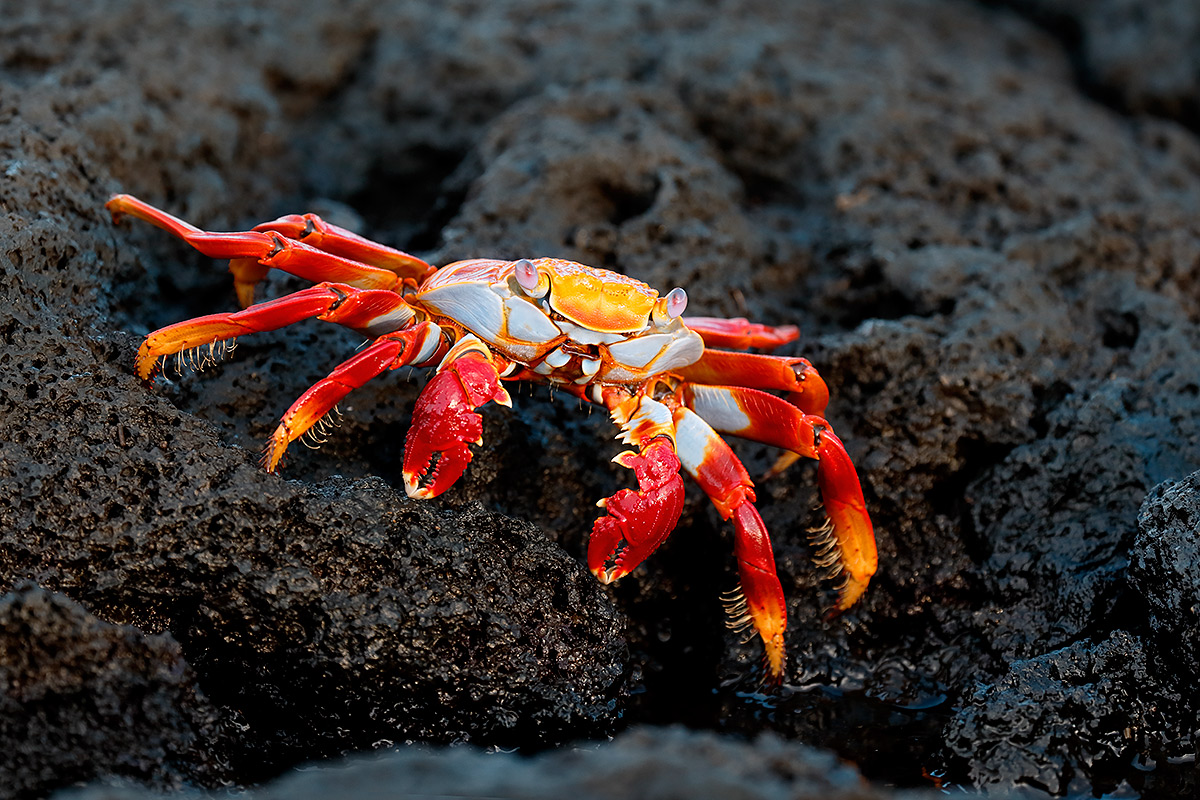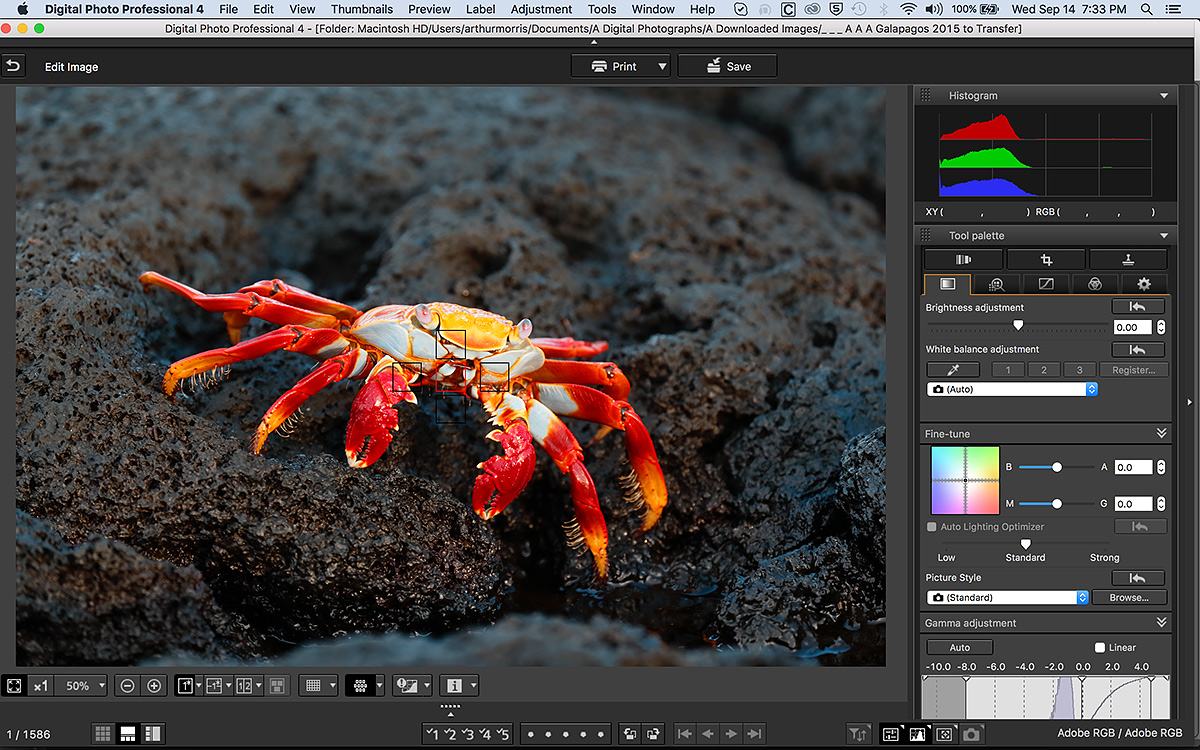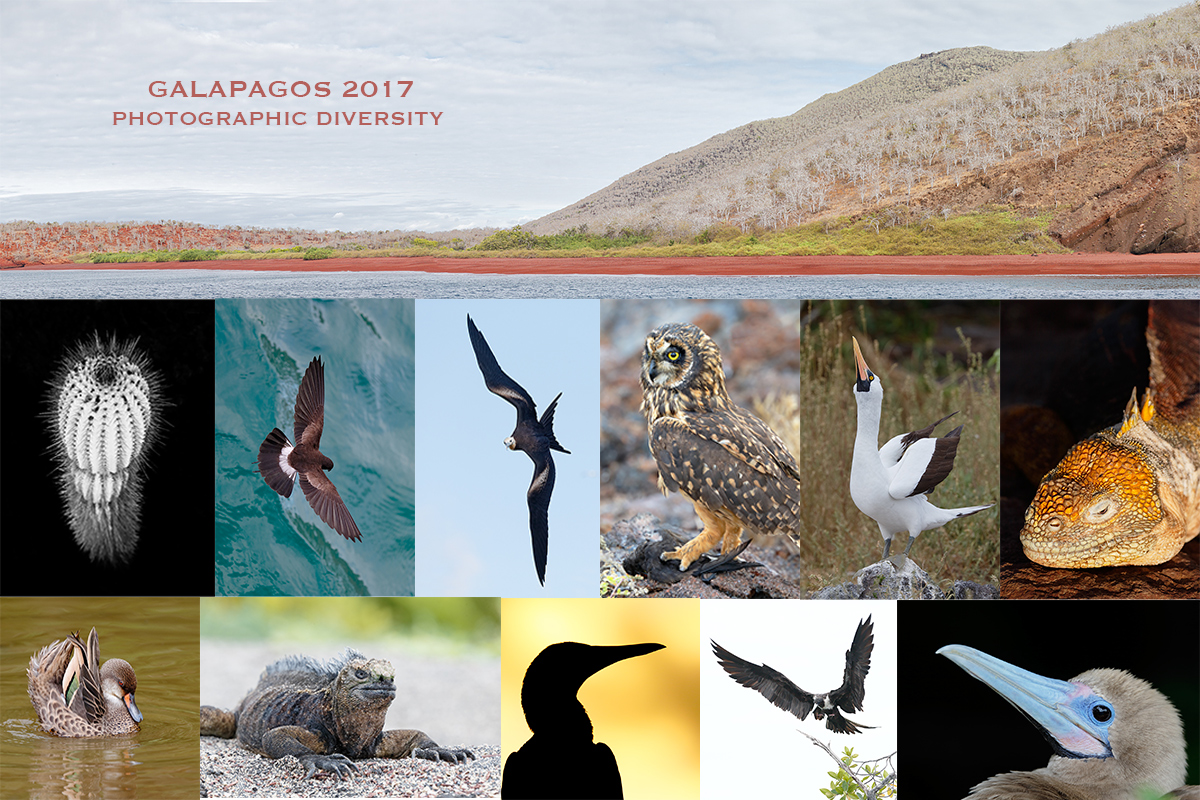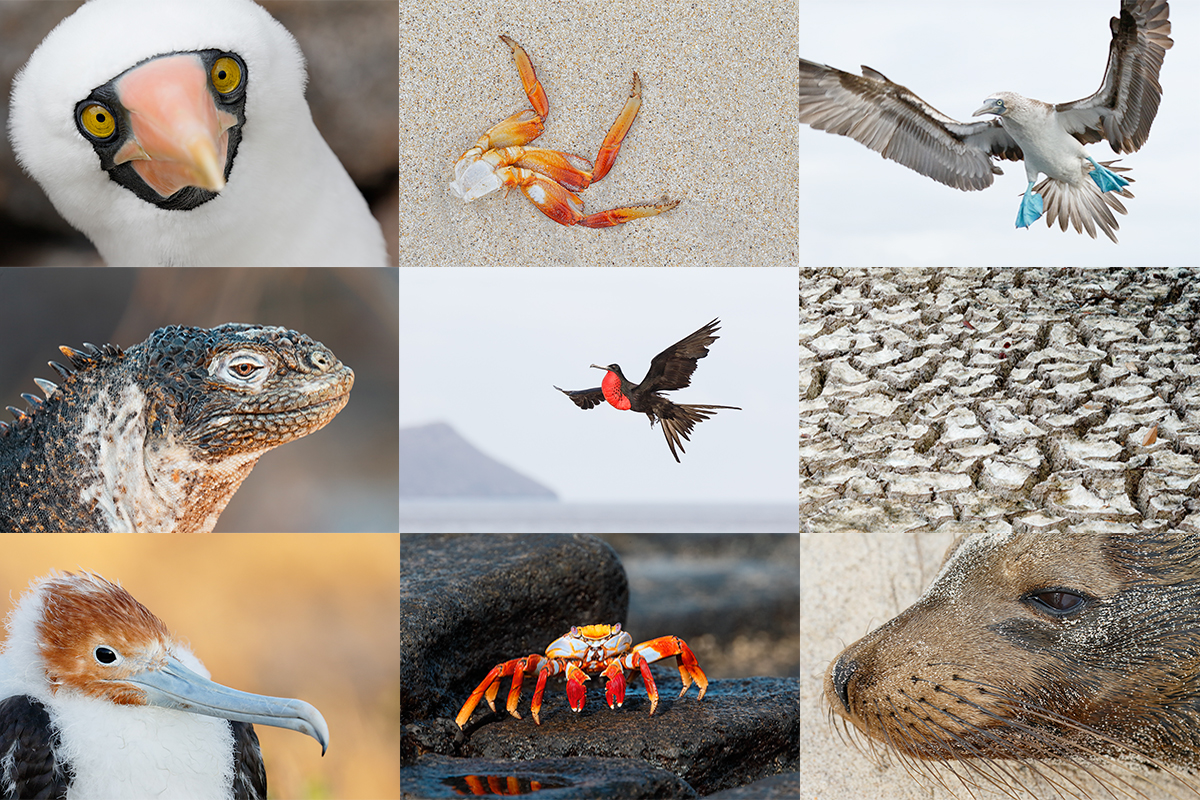What’s Up?
I am somewhere in South America. I hope that you are well. Jim and Jen are at the office most days to help you with your mail order needs and Instructional Photo-Tour sign-ups. I still need folks for San Diego, Japan, Galapagos, the Palouse, and the Bear Boat (Grizzly Cubs) trips. Among others 🙂 Please e-mail for couples and discount info for all of the above. Click here for complete IPT info.
I will have relatively decent internet access for all but 22 OCT thru 11 NOV while I am on the Sea Spirit. Best and great picture making, artie
Gear Questions and Advice
Too many folks attending IPTs and dozens of the folks whom I see in the field, and on BPN, are–out of ignorance–using the wrong gear, especially when it comes to tripods and more especially, tripod heads… Please know that I am always glad to answer your gear questions via e-mail.
The Streak: 347!
Today’s blog post marks a totally insane, irrational, illogical, preposterous, absurd, completely ridiculous, unfathomable, silly, incomprehensible, what’s wrong with this guy?, makes-no-sense, 347 days in a row with a new educational blog post. There should be no end in sight until my big South America trip next fall. Or not… As always-–and folks have been doing a really great job recently–-please remember to use our B&H links for your major gear purchases. For best results use one of our many product-specific links; after clicking on one of those you can continue shopping with all subsequent purchases invisibly tracked to BAA. Your doing so is always greatly appreciated. Please remember: web orders only. And please remember also that if you are shopping for items that we carry in the new BAA Online Store (as noted in red at the close of this post below) we would appreciate your business.
|
This image created was on Punta Espinoza in the Galapagos archipelago with the hand held Canon EF 100-400mm f/4.5-5.6L IS II USM lens, the Canon Extender EF 1.4X III (at 420mm) with the EOS-1D X (now replaced by the rugged, blazingly fast pro body, the Canon EOS-1D X Mark II with 64GB Card and Reader. ISO 800. Evaluative metering at (???): 1/160 sec. at f/8 in Av mode. AWB. Center AF point (by necessity)/AI Servo Expand/Rear Focus AF as framed was active at the moment of exposure (as is always best when hand holding). See the screen capture below to learn more. Click here to see the latest version of the Rear Focus Tutorial. Click on the image to see a larger version. Sally Lightfoot Crab on lava rock |
Sally Lightfoot Crabs
Sally Lightfoot Crabs are common on about half of our landings and several of the landings are outstanding for these colorful
arthropods. I love photographing them on the black lava rock. Though there are lots of Sally Lightfoots they can be shy; you need to approach them lowly and slowly. And I am always on the lookout for good blur situations with the waves breaking over the crabs.
Exposure Quiz
You tell me. Did I add or subtract light to the metered exposure. Either way, how much?
DPP 4 Screen Capture |
DPP 4 Screen Capture
Note that a tiny strip of the RED channel goes well into the fifth histogram box, almost reaching the righthand axis. I would have loved to included more water at the bottom but I needed AF active when hand holding… With either the Canon EOS-1D X Mark II or the new Canon EOS 5D Mark IV I could have selected an upper sensor and achieved the composition that I wanted…
The Image Optimization
After converting the RAW file in DPP 4 pretty much straight up, I rotated the crab about 4 degrees clockwise to introduce a diagonal element and cropped from the top and the left. Then I did a lot of work (in one minute) with Selective Color. I added about 20 points of CYAN to the REDs and about 5 points of BLACK to the BLACKs. I ran my NIK Color Efex Pro 25/25 recipe to the crab only and added White Neutralizer as well. The last move was a good one as is rendered the light blue on the crab’s shell beautifully. Total time in Photoshop: four minutes. The result: not shabby, and I love the color.
Everything above plus tons more is of course detailed in my Digital Basics File, an instructional PDF that is sent via e-mail. It includes my complete (former PC) digital workflow, dozens of great Photoshop tips, details on using all of my image clean-up tools, the use of Contrast Masks, several different ways of expanding and filling in canvas, all of my time-saving Keyboard Shortcuts, the basics of Quick Masking, Layer Masking, and NIK Color Efex Pro, Digital Eye Doctor techniques, using Gaussian Blurs, Dodge and Burn, a variety of ways to make selections, how to create time-saving actions, and tons more.
|
Tame birds and wildlife. Incredible diversity. You only live once… |
GALAPAGOS Photo Cruise of a Lifetime IPT/The Complete Galapagos Photographic Experience. August 8-22, 2017 on the boat. 13 FULL and two half-days of photography: $12,499. Limit: 13 photographers plus the leader: yours truly. Openings: 4.
Same great trip; no price increase!
My two-week Galapagos Photo-Cruises are without equal. The world’s best guide, a killer itinerary, a great boat (the Samba), and two great leaders with ten Galapagos cruises under their belts. Pre-trip and pre-landing location-specific gear advice. In-the-field photo instruction and guidance. Jeez, I almost forgot: fine dining at sea!
The great spots that we will visit include Tower Island (including Prince Phillips Steps and Darwin Bay), Hood Island (including Punta Suarez, the world’s only nesting site of Waved Albatross, and Gardner Bay)—each of the preceding are world class wildlife photography designations that rank right up there with Antarctica, Africa, and Midway. We will also visit Fernandina, Puerto Ayora for the tortoises, Puerto Egas—James Bay, and North Seymour for nesting Blue-footed Boobies in most years, South Plaza for Land Iguanas, Floreana for Greater Flamingoes, and Urbina Bay, all spectacular in their own right. We visit every great spot on a single trip. Plus tons more. And there will be lots of opportunities to snorkel on sunny mid-days for those like me who wish to partake.
It is extremely likely that we will visit the incredible Darwin Bay and the equally incredible Hood Island, world home of Waved Albatross twice on our voyage. The National Park Service takes its sweet time in approving such schedule changes.
We will be the first boat on each island in the morning and the last boat to leave each island every afternoon. If we are blessed with overcast skies, we will often spend 5-6 hours at the best sites. And as noted above, mid-day snorkeling is an option on most sunny days depending on location and conditions. On the 2015 trip most snorkeled with a mega-pod of dolphins. I eased off the zodiac to find hundreds of dolphins swimming just below me. Note: some of the walks are a bit difficult but can be made by anyone if half way decent shape. Great images are possible on all landings with either a hand held 70-200mm lens and a 1.4X teleconverter or an 80- or 100-400. I sometimes bring a longer lens ashore depending on the landing. In 2017 I will be bring the Canon 400mm IS DO II lens. In the past I have brought either the 300mm f/2.8L IS II or the 200-400mm f/4 L IS with Internal Extender.
|
Do consider joining me for this once in a lifetime trip to the Galapagos archipelago. There simply is no finer Galapagos photography trip. Learn why above. |
An Amazing Value…
Do know that there are one week Galapagos trips for $8500! Thus, our trip represents a tremendous value; why go all that way and miss half of the great photographic locations?
The Logistics
August 6, 2017: We arrive in Guayaquil, Ecuador a day early to ensure that we do not miss the boat in case of a travel delay.
August 7, 2017: There will be an introductory Galapagos Photography session and a hands on exposure session at our hotel.
August 8, 2017: We fly to the archipelago and board the Samba. Heck, on the 2015 trip some people made great images at the dock in Baltra while our luggage was being loaded!
August 22, 2017: We disembark late morning and fly back to Guayaquil midday; most will overnight there.
Most will fly home on the early morning of July 23 unless they are staying on or going elsewhere (or catching a red-eye flight on the evening of the 22nd).
$12,499 includes just about everything: all transfers, guide and park fees, all food on the boat, transfers and ground transportation, your flights to the archipelago, and three nights (double occupancy) in a top notch hotel in Guayaquil. If you are good to go, a non-refundable deposit of $5,000 per person is due immediately. The second payment of $4,000 is not due until 11/1/16. The final payment of $3449 per person will be due on 2/1/17. A $200 discount will be applied to each of the balances for couples or friends who register at the same time.
Purchasing travel insurance within 2 weeks of our cashing your deposit check is strongly recommended. On two fairly recent cruises a total of 5 folks were forced to cancel less than one week prior to the trip. My family and I use Travel Insurance Services and strongly recommend that you do the same.
Not included: your round trip airfare from your home to and from Guayaquil, beverages on the boat, phone calls, your meals in Guayaquil, personal items, and a $600/person cash tip for the crew and the guide—this works out to roughly $40/day to be shared by the 7 folks who will be waiting on us hand and foot every day for two weeks. The service is so wonderful that many folks choose to tip extra.
Please e-mail for the tentative itinerary or with questions. Please cut and paste “Galapagos 2017 Tentative Itinerary Please” into the Subject line.
Please Remember to use my Affiliate Links and to Visit the New BAA Online Store 🙂
To show your appreciation for my continuing efforts here, we ask, as always, that you get in the habit of using my B&H affiliate links on the right side of the blog for all of your photo and electronics purchases. Please check the availability of all photographic accessories in the New BIRDS AS ART Online Store, especially the Mongoose M3.6 tripod head, Wimberley lens plates, Delkin flash cards and accessories, and LensCoat stuff.
As always, we sell only what I have used, have tested, and can depend on. We will not sell you junk. We know what you need to make creating great images easy and fun. And we are always glad to answer your gear questions via e-mail.
I would of course appreciate your using our B&H affiliate links for all of your major gear, video, and electronic purchases. For the photographic stuff mentioned in the paragraph above we, and for everything else in the new store, we, meaning BAA, would of course greatly appreciate your business. Here is a huge thank you to the many who have been using our links on a regular basis and those who will be visiting the New BIRDS AS ART Online Store as well.
Be sure to like and follow BAA on Facebook by clicking on the logo link upper right. Tanks a stack!
Typos
In all blog posts and Bulletins, feel free to e-mail or to leave a comment regarding any typos or errors. Just be right 🙂


















0 Zero.
+.5 to +1 stop
Keep the whites white.
Add/keep detail and highlights with lava
-2. Nicely done!
Kinda hard to say. Definitely -, but depends on the day. Overcast, sunlight, time of day?
Obviously low light based on the look of the image and the ISO and shutter speed …
The crabs light carapace areas is definitely going to be extremely reflective, especially in sunlight, assuming moisture.
The reflectance has nothing to do with it 🙂 It is the tonality that matters and you are on the right track in realizing that we must be concerned here with the light blues on the crab’s shell.
So in direct sunlight might be – 2 or more. In overcast situations, less.
That is an excellent point!
The histogram show a significant under exposure, so my guess, to control the highlights, prob -2.
If you take a close look at the RGB histogram you will see that the red channel is close to the edge so the image is not underexposed. Be careful not to be fooled by the lying histograms.
I am sure you have already noticed, the 5div in live view has a pre exposure histogram. Really cool and a great tool for tough exposures.
Had not but I will check it out. Later and much love, artie
It’s not ‘significantly underexposed’ as the red channel is almost touching the right hand axis of the histogram.
It is a about a stop underexposed however, as the histogram is a JPEG depiction of the RAW reality so this shot could have taken considerably more exposure and the resulting image brightness then normalised in post with no problem.
With normal (non evaluative) metering and based on the majority of the background being very dark, about 2 stops minus compensation might be in order.
With evaluative metering, compensation is a lottery because the evaluative metering is already doing a deal of evaluating/compensation based on a continuously evolving and improving algorithm. Probably around -1.3 EV.
Best look at what the highlights are doing and adjust accordingly to maximise exposure without highlight clipping.
-2 because of all the black lava rock. Great Image!
-1
Somewhere between minus 2.5-3.0
-2/3
My guess is the lighter subject was large enough in the frame to balance out the dark background and no exposure adjustment was needed.
-2.5
minus 1/3